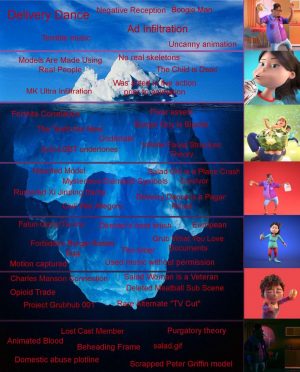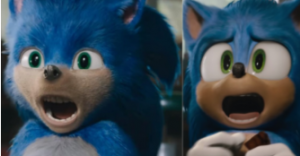Is Grubhub’s Deliver Dance the future of marketing?
March 2, 2021

One advertisement that played during Super Bowl LV really stood out, or more so, danced out to me. Grubhub’s commercial, “Grubhub’s Delivery Dance,” was first streamed in Nov. 2020, but I first saw it during the ad break of the game. It didn’t catch my full attention until the man with the purple shirt started dancing.
It’s not unusual for a commercial to include dancing characters, but something about their boneless, jelly-like dancing, the strangely human teeth and the poor, bug-eyed child have turned this seemingly harmless commercial into a meme.
Grubhub uploaded this commercial to Youtube on Nov. 16, 2020. The video now has nearly 10 million views, 160,000 likes and 485,000 dislikes. To put this in perspective, out of the 10 million viewers, 645,000 left a like or dislike. In that 645,000, 25% of them liked the video and 75% of them disliked it. In this video, the song “Soy Yo” by Bomba Estéreo” plays, which some think made it worse, but I like the song. Nevertheless, the commercial is bad.
On Jan. 25, 2021, this commercial was added to the website Know Your Meme, which described it as having “several animated characters perform a ‘delivery dance’ while consuming various foods.” The distaste for this commercial was first spread on Reddit and then to Youtube. On Reddit, the commercial was strongly hated for just existing, with some comparing the hate for this commercial to the much hated ‘Ice Age baby.’ They have both often been hated for being aesthetically displeasing.

On Youtube, edits have been made to exaggerate the awkwardness of the video, my favorite being GrubHub Ad but with “realistic sounds.” Other videos try to fix the commercial, mainly by removing half the characters, and some posted theories as to why the commercial is so bad. One theory is that the commercial originally included real-life actors and that these actors were put into a virtual simulator to make the models of the characters. Some theories give backstories to the characters, and some claim that the woman with the salad was a plane crash survivor in a war. Not too sure about the legitimacy of either, but they’re theories nonetheless.
Countless criticisms have been leveled against the commercial: its poor animations and the repulsive gyrating dance done by the characters. However, my main question, other than why are the teeth so human, is if this was on purpose. Are companies making horrible commercials and advertisements on purpose to go viral? I believe so.
Think back to Apr. 30, 2019 and what was trending on Twitter. The movie trailer that took the internet by storm. The original “Sonic the Hedgehog” movie trailer.

No one expected a horrifyingly-designed, off-colored Sonic with realistic eyes and human teeth who ran with Coolio’s Gangster’s Paradise playing in the background. Many people demanded changes to the Sonic model and others for the cancellation of the movie as a whole. What’s most interesting, at least to me, is that these demands were made through satire-filled tweets and memes, similar to the backlash of Grubhub’s commercial.
Eventually, the original trailer was taken down on Youtube and a new trailer was posted with a model for Sonic. It was well-received and many who hated the original praised the company for listening to the fans. Once the hype died down, some speculated that this was planned, that the new model wasn’t actually new and that the original trailer was a marketing scheme. This marketing scheme would both create credibility for Paramount and draw more attention to their film.
Did this work? I can confidently say that I believe so. This is based on a personal experience since I actually watched the “Sonic the Hedgehog” movie. I watched it for the sole purpose of wanting to know if it’s bad. I can also say that I didn’t think it was bad, at least for a kids’ movie. Would I watch it again? Probably not. Did I watch it with low expectations which somewhat shaped my opinion of the movie? Yes.
So what does this mean for the future of marketing? Will companies just make poor quality commercials or have random A-list celebrities promote their products? Probably. GrubHub has already done both. Personally, I feel almost offended by these new tactics. It feels as if companies are no longer trying to convey their credibility by just having good products. They aren’t persuading the consumer to buy their products with logistical facts saying why they’re better than other competitors or telling consumers why they would need the product. It’s like they are just making something bad and letting the internet do the advertising for them.
I can attest that I do enjoy the jokes and criticisms of these advertisements. If they’re bad, they should be called out for it; but, if the way they are called out is funny, that’s even better. However, I don’t enjoy participating in free advertisement at the expense of the quality of a product. I don’t want to like or buy a product out of irony, I want to buy the product because I think it is well-made or useful to me. It is a bit upsetting, but as for the future of marketing, I can only dream of the types of advertisements Gen Z will make in the near future.

